By Hanan Jaber
Welcome back to part 2 of our Arabic Manuscripts at the RBML series! Today, we present to you some Islamic as well as Christian texts found in Arabic.
Asrar Namah by Shaykh Farid al-Din ‘Attar
Amongst the Arabic manuscripts, there were also Persian manuscripts, such as Asrar Namah, a Sufi “secret” book originally written in the thirteenth century by Farid al-Din ‘Attar. The copy at the RBML was bound in full leather with a central oval medallion on the front and rear covers and was written around the 19th century by a scribe named ‘Umar al-Khatib. This Sufi “secret” philosophical work contains nine chapters. The first three chapters of the text are about monotheism, sending blessings on the Prophet Muhammad, and the virtues of the four rightly guided Caliphs. The fourth chapter discusses various topics of Sufism. The fifth chapter focuses on the importance of love and its superiority to wisdom, and refutes the philosophy of the Mishaiites. The next chapter addresses Sufi theology. The sixth chapter explains the hierarchy of beings. In the seventh and eighth chapters, ʻAṭṭār explains that the world humans perceive with their senses is imaginative. In other words, humans only see and perceive the appearance of things, not the truth and substance of them, and if humans were to truly see the truth of things, they would find that they all originate from the same essence. From the ninth chapter onwards, ʻAṭṭār talks about the afterlife, ending his book with reminding the believing Muslim that death is inevitable. (Call No. Post-1650 MS 0750)
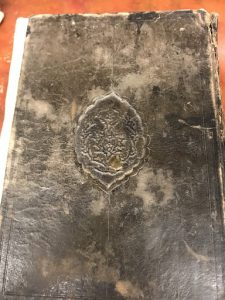
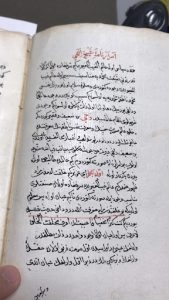

Kitab Tafsir al-Zabur al-Ilahi al-Sharif
This commentary was partially manuscript and partially printed, so we cannot fully describe it as a manuscript, although it was still an interesting item. This book, published in Vienna, Austria, is the text of the Aleppo Psalter with commentary. It contains the Psalms of David, translated into Arabic by ʻAbd Allāh ibn al-Faḍl al-Antākī with a commentary and an Arabic translation of the Introductions of St. Athanasius, Patriarch of Alexandria, and Eusebius, Bishop of Caesarea, by Anthimos, Patriarch of Jerusalem. (Call No. IUQ05004)
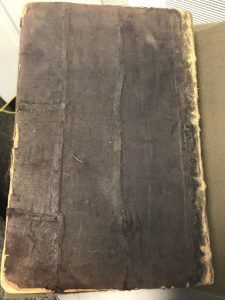

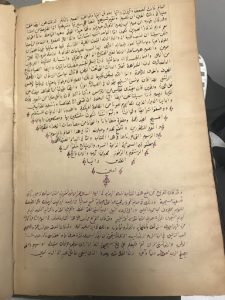
Arabic Prayer Book with Arabic and Ottoman Turkish Commentary
An interesting point about this manuscript was that it was written in Ottoman Turkish, a language that is written in Arabic script and was the official language of the Ottoman Empire until World War I. This manuscript, written in 1790, is primarily a prayer book, filled with Quranic verses and supplications that help a person heal physically and spiritually. The author, Raqim al-Mustafa, first explains in Ottoman Turkish how each supplication or prayer helps the individual reading them, and then writes out the prayers or verses in Arabic. (Call No. Post-1650 MS 0752)
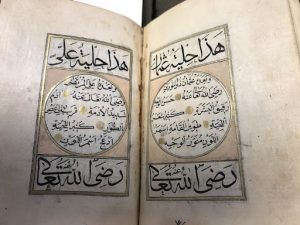
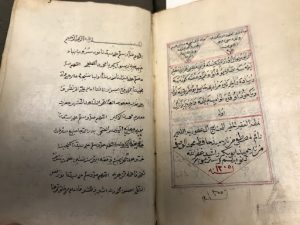
Tuhfat al-Tullab bi-Sharh Tahrir Tanqih al-Lubab by Abu Yahya Zakariya al-Ansari
This 1823 manuscript was the first one I encountered which discussed some components of Islamic law. It is a commentary by Zakarīyā ibn Muḥammad al-Anṣārī (approximately 1423-approximately 1520), a prolific Egyptian Shafiʻī Islamic law scholar, Shaykh al-Islām and Qāḍī al-Quḍāh, on his own compendium of Islamic law according to the Shāfi’ī school of thought, entitled “Taḥrīr Tanqīḥ al-Lubāb”, being an epitome of “Tanqīḥ al-Lubāb” of Aḥmad ibn ʻAbd al-Raḥīm ibn al-‘Irāqī (1361-1423), itself an abridgement of a larger work by Aḥmad ibn Muḥammad ibn al-Maḥāmilī (died 1024) entitled “al-Lubāb al-fiqh al-Shāfiʻī”. (Call No. Post-1650 MS 0757)
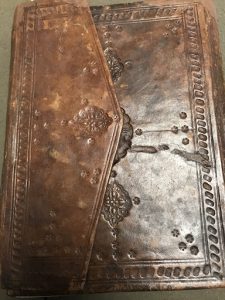
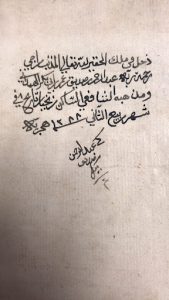

Stay tuned for our last blog post for this series where we display the Qur’ans we found, literary criticisms, and 19th-century letters and advices.